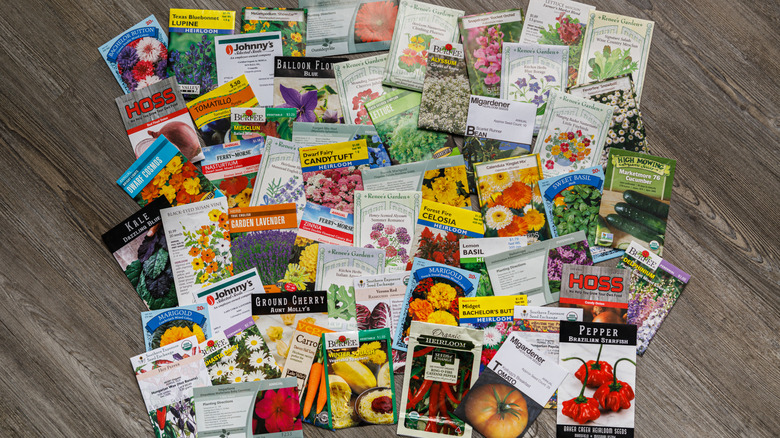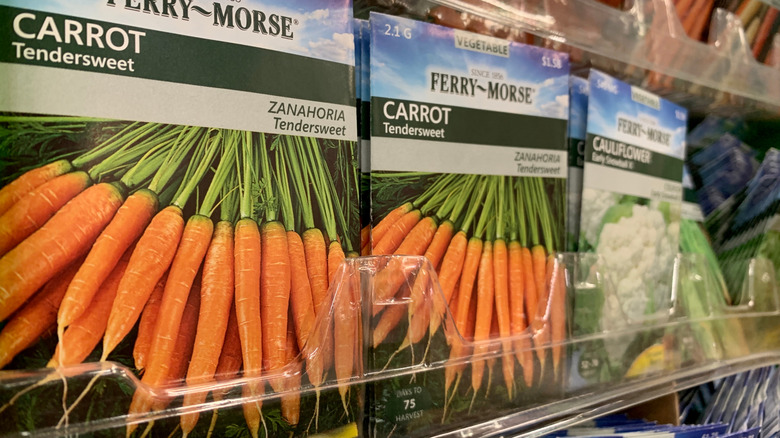How To Read A Seed Packet Label To Better Understand What You're Getting
Growing plants from seed is a rewarding experience, not to mention a low-cost way to end up with oodles of plants. But if you're just looking at the front of the packet when you shop, you may be missing out on important information. The fine print on seed packets can help you figure out whether that variety is suitable for your garden, saving you money on seeds you can't use. Moreover, the packet provides important guidance when it comes time to plant — from the best time of year to sow the seeds to how much space to leave between each one.
While seed packets vary from company to company, you'll typically see the most important basics on the front of the packet, like the type of plant, the specific variety or cultivar, and a photo or illustration of it. The name of the seed company, weight of the packet, and price are also often featured there, as well as noteworthy labels like "organic" or "heirloom." Organic seeds are produced without the use of harmful pesticides or fertilizers, while heirlooms have been passed down through generations without being crossbred.
There may be a brief description of the plant that highlights interesting features and/or essential information, like how long it takes to mature. Keep reading, and you'll learn more details about what to expect if you grow that plant, such as how tall it gets and whether it's an annual or perennial. Annuals live for only one season, while perennials stay alive for several. Aside from that, most of the information on a seed packet concerns how and when to sow the seeds.
Details to look for on every seed packet
While you can ignore directions on seed packets if you like, they're a great way to ensure that you're giving your seeds the best chances of success. The first details to look for are what time of year to sow the seeds and whether they may be sowed outdoors, indoors, or both. Sometimes there's a map and chart, which show you when to plant outside based on your USDA hardiness zone. Or you may see references to frost dates, like "four weeks before last frost." You can find both your USDA hardiness zone and the expected last frost date for your region online. Often, the packet will list the optimum soil temperature for the seeds to thrive as well.
Next, the packet will instruct you on how deep to sow the seeds and how far to space them out. If it's recommended that you thin the seedlings, the packet will say how much space to leave between them with a label like "thin to 8 inches." It often includes how much sunlight and water the plant needs; "full sun" usually means six or more hours of sun per day.
The seed packet will also tell you how long the seeds take to germinate (or sprout) as well as the germination rate (what percentage of seeds should sprout). There will be a "packed for" or "sell by" date. The "packed for" date should be the current year, and the "sell by" date tells you when the listed germination rate is no longer guaranteed. If you plant older seeds, fewer may sprout into seedlings than if they were fresh.

